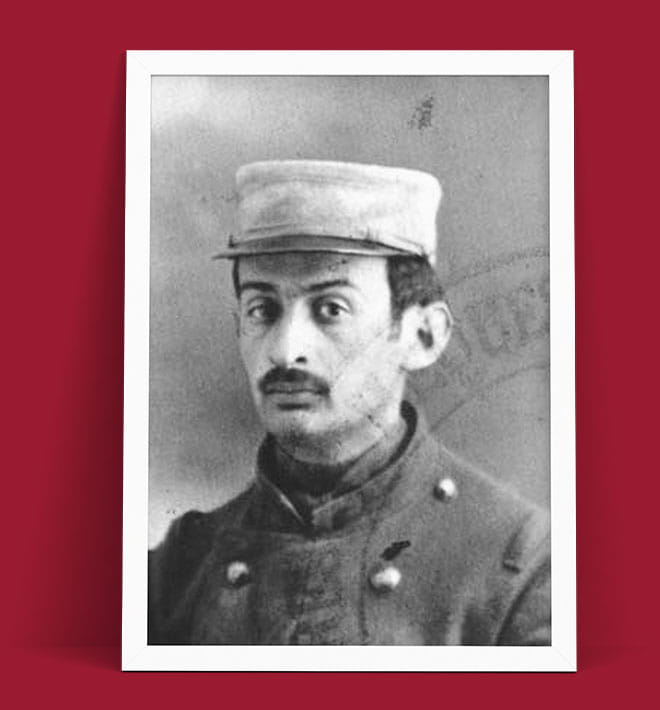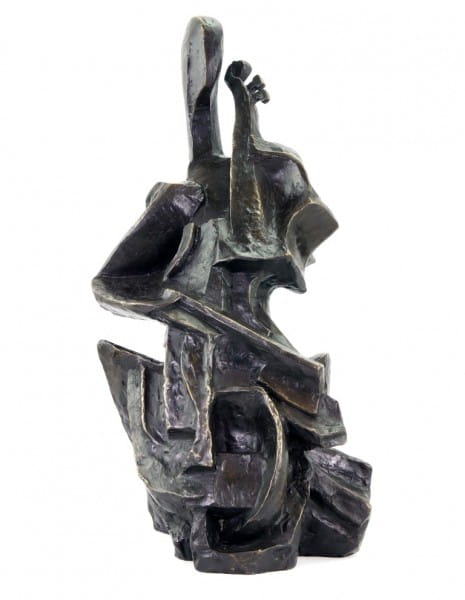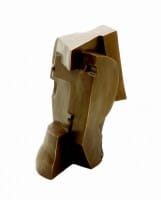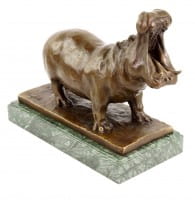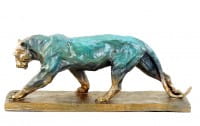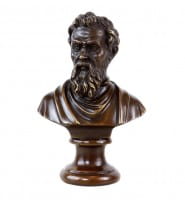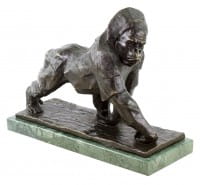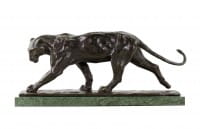Prices incl. VAT, free shipping worldwide
Ready to ship today,
Delivery time appr. 3-6 workdays










Product description
"The Cello Player (1912–1913) - Otto Gutfreund - Cubism Sculpture - Cellista"
| Height | 47 cm |
| Width | 24 cm |
| Length | 23 cm |
| Weight | 9,2 kg |
The Cello Player (1912–1913) - Bronze Statue - Cellista - Signed Otto Gutfreund
Few works in the history of modern art embody the convergence of movement, emotion, and abstract geometry as powerfully as Otto Gutfreund’s “The Cello Player” (Cellista, 1912–1913). Conceived during the artist’s most experimental and visionary period in Paris and limited to only 20 signed bronze casts, this extraordinary sculpture translates the musical act of cello performance into a volumetric composition of raw tension, dynamic rhythm, and architectural abstraction. As a defining milestone of early cubism sculpture, The Cello Player is not a mere depiction of a musician, but a metaphysical embodiment of musical structure, vibrating through planes, angles, and interlocking forms. It stands as one of Gutfreund’s most celebrated contributions to 20th-century sculpture and a masterclass in sculptural innovation.
The Bohemian Sculptor at the Birth of Modernism
Otto Gutfreund was born on August 3, 1889, in Dvůr Králové nad Labem, then part of the Austro-Hungarian Empire, in what is now the Czech Republic. Raised in a world still dominated by classical art traditions, Gutfreund demonstrated a precocious mastery of material and form. His early education in ceramics at the School of Applied Arts in Bechyně gave him an essential foundation in the plastic arts, which he later expanded at the Prague School of Decorative Arts. In 1910, he left for Paris, where his artistic vision was radically transformed under the guidance of Antoine Bourdelle at the Académie de la Grande Chaumière and through his immersion in the revolutionary circles of Cubist artists. There, in the crucible of Cubism, he found his sculptural language—unique, forceful, and spiritually charged.
Paris, 1912–1913 – Where Sculpture Learns to Sing
It was during these formative years in Paris that Gutfreund created The Cello Player, a sculpture that fuses the physicality of the human figure with the expressive syntax of Cubism. The work explodes the static, classical conception of a seated musician. Instead, it delivers a storm of angular limbs, intersecting planes, and sinuous voids that vibrate like musical phrases. Arms dissolve into motion, the instrument itself is absorbed into the body, and the entire figure becomes a visual symphony of tension and release. As a cubism sculpture, it is one of the first to go beyond structural experimentation to address the immaterial—sound, rhythm, and time.
A New Language of Volume and Movement
In The Cello Player, Gutfreund reframes the body and instrument as a single sculptural event. Rather than delineating anatomical accuracy, he breaks the figure into bold sculptural modules that echo the visual fragmentation found in Cubist painting but reinterprets it fully in three-dimensional space. The head tilts forward in abstraction, the fingers stretch in rhythmic lines, and the cello itself becomes a geometric echo of the human torso. This is cubism sculpture at its most fluid and intuitive, where formal analysis merges with musical intuition. The work does not just represent music—it enacts it, in bronze.
Bronze as Resonant Material
The casting of this sculpture in bronze enhances its acoustic metaphor. The material is both solid and sonorous, dense and luminous. The patina—dark, rich, subtly variegated—absorbs light in a way that enhances the formal depth of the piece. Each edge and surface catches shadow and reflection differently, as if mimicking the modulations of a cello’s tone. Gutfreund's handling of bronze is never decorative; it is elemental. The sculpture is tactile and grounded, yet it pulses with immaterial energy, like an instrument resonating long after the final note.
A Rarity in Form and Number
Only 20 editions of The Cello Player were ever cast and each is signed with Otto Gutfreund, underscoring the exclusivity and conceptual integrity of the work. Far from being a commercial product, each cast was intended as a personal artistic manifesto—an object through which Gutfreund could share his radical sculptural vision with the world. It is a rare synthesis of modernist experimentation and emotional profundity, a cornerstone of cubism sculpture that remains unequaled in intensity and poetic expression.
Legacy of the Cellista – Between Music and Form
Although Gutfreund’s life was cut short in 1927, his legacy in European sculpture endures. After returning to Prague following the war, he shifted toward more measured forms, eventually teaching at the Academy of Fine Arts. But it is works like The Cello Player, created at the height of his Parisian experimentation, that remain most emblematic of his brilliance. They represent the unrepeatable energy of a moment in art when everything seemed possible, and every boundary was ready to be broken. As a key example of cubism sculpture, this piece demonstrates not only Gutfreund’s technical prowess but his philosophical ambition—his desire to translate the invisible intstructure.
The Sound of Form, the Form of Sound
In The Cello Player, Gutfreund sculpts music itself. This is not just a figure in motion; it is motion made matter, rhythm made visible, and harmony made solid. It speaks to the universal need for structure in the midst of chaos, and beauty within complexity. It is a sculpture that defies silence, vibrating still with the energy of its creation more than a century ago. As one of the rarest and most profound examples of early cubism sculpture, The Cello Player remains not only a visual triumph but a sculptural aria—cast in bronze, composed in thought, and destined to resonate far beyond its time.
detailed replica
Our advantages
free shipping
Worldwide free shipping
14 days money back
You can cancel your order
within 14 days
secure payment services
Paypal, Master Card, Visa, American Express and more

